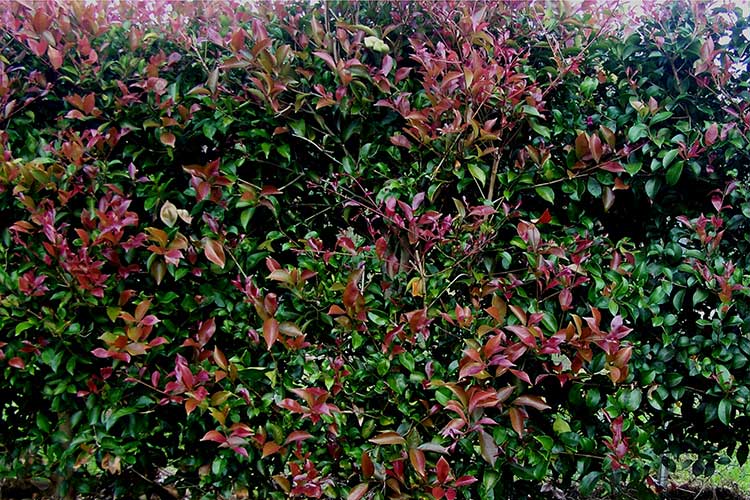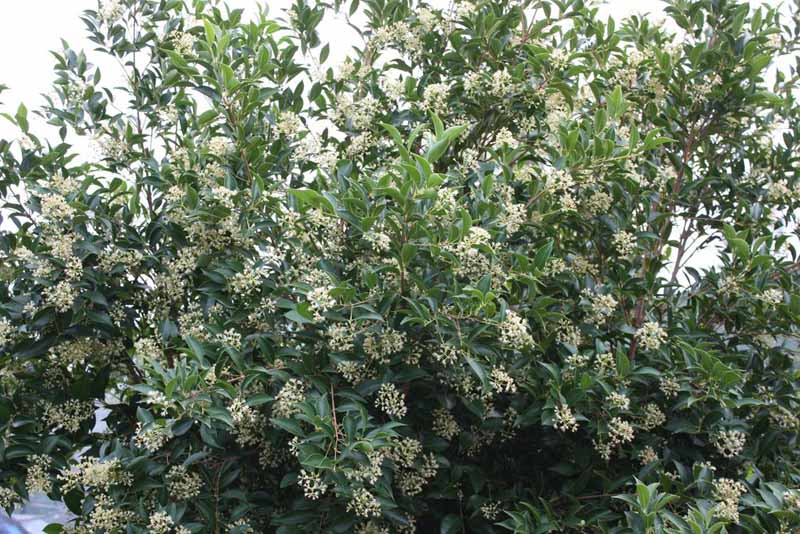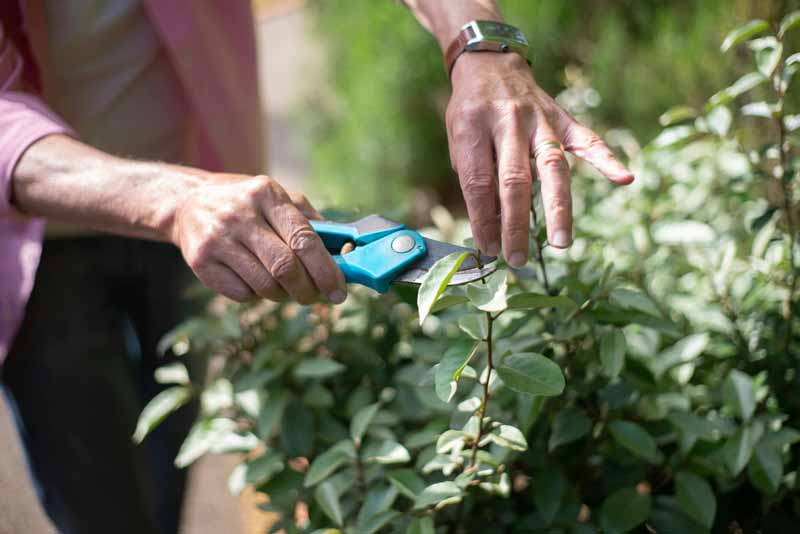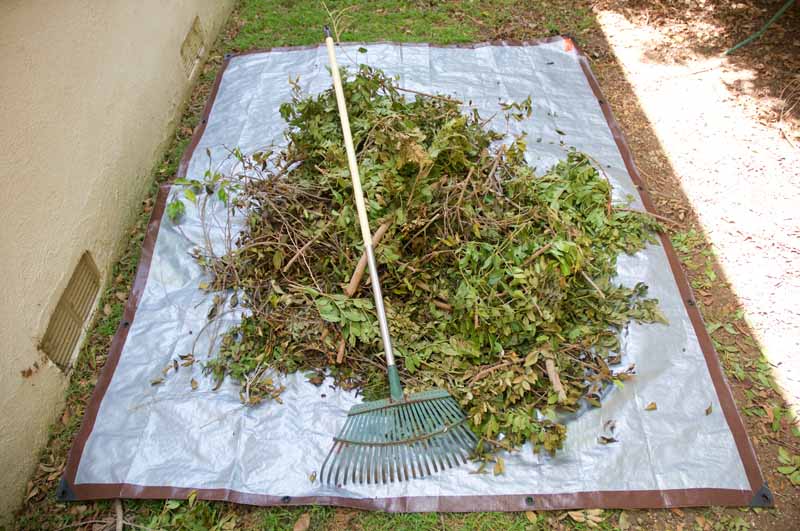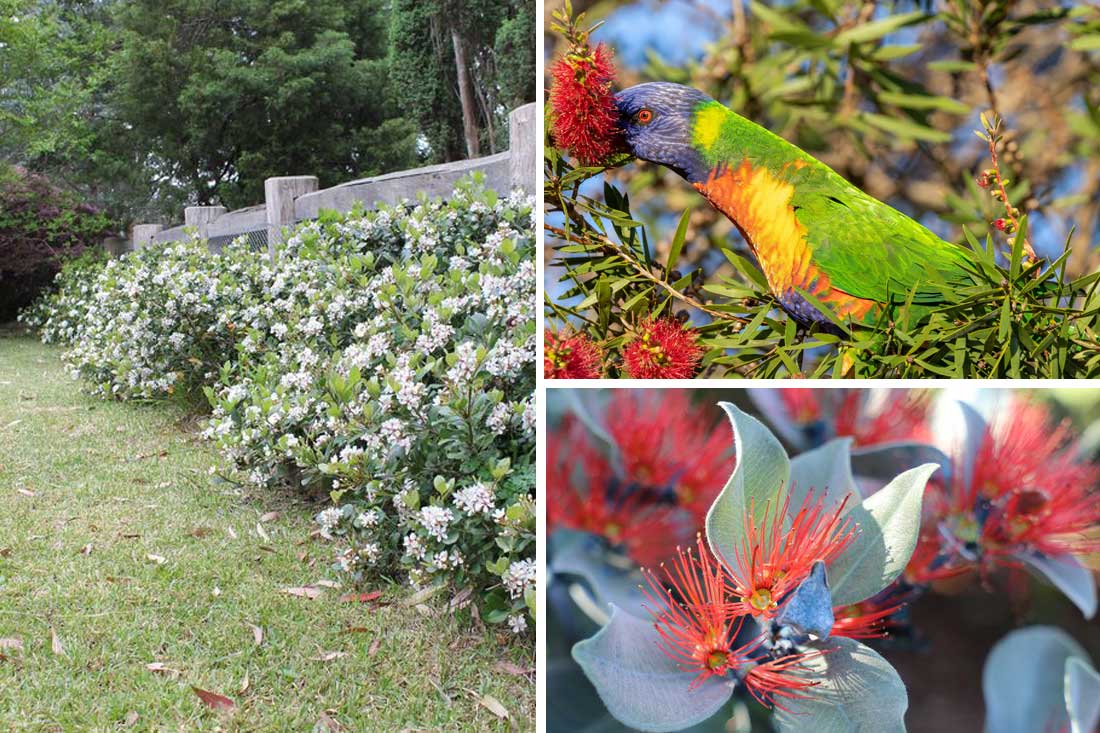Hedge plants are usually selected for their ability to withstand constant pruning and form dense compact plants. Many hedge plants are also very hardy which contributes to their success as a hedge. Hedges however hardy are not immune to pest and disease attack, and this can have devastating effects for the hedge.
A hedge is a row of the same plant which means every plant in that row is vulnerable to the same pests and diseases. Once one plant is infected, problems can spread through the entire hedge very quickly. By noticing early stages of pest or disease attack, you may be able to prevent any lasting damage to your hedge.
Myrtle Rust
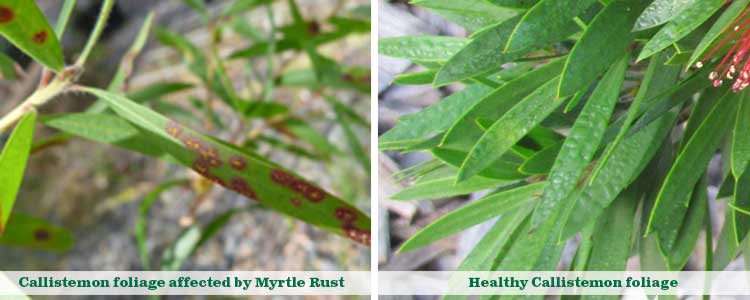
Possibly the most serious disease affecting hedges in recent times is myrtle rust. This is a fungal disease which was first identified in Australia in 2010. Plants in the Myrtaceae family are affected, including lily pillies and Callistemons – popular hedge plants. Myrtle rust is spread by wind borne spores, making it exceptionally difficult to control. Many lilly pillies hedges have succumbed and have had to be removed. It is identified by purple pustules followed by yellow powdery spots appearing on young leaves. At the very first sign of myrtle rust you must treat the entire hedge with a foliar fungicide. Retreat the hedge according to directions on the fungicidal product. If treatment is not effective, the hedge will need to be carefully removed.
As myrtle rust is fungal, it is more prevalent during warm conditions when moisture is about. If you have had any incidence of myrtle rust nearby it may be worthwhile to apply a preventative treatment of fungicide to your hedges if they are susceptible to myrtle rust.
New varieties of lilly pilly and callistemon have been shown to have good resistance to myrtle rust and these should be selected if planning a new hedge. Myrtle rust resistant varieties include Green John™ Callistemon viminalis ‘LJ23’ PBR, Macarthur™ Callistemon viminalis ‘LC01’ PBR, Slim™ Callistemon viminalis ‘CV01’ PBR, Hobbit™ Syzygium francisii ‘DBK01’ PBR,Red Head™ Acmena smithii ‘BWNRED’ PBR, Sublime™ Acmena smithii ‘DOW30’ PBR and Sweeper® Waterhousea floribunda ‘DOW20’ PBR.
Lilly Pilly Psyllid
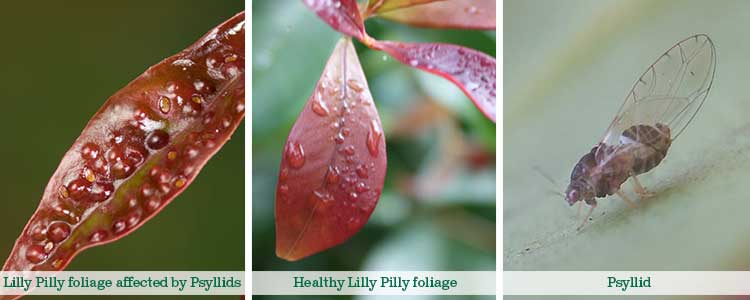
The lilly pilly psyllid is a tiny sap sucking insect which attacks the young leaves of susceptible lilly pillies. The plant responds to the insect by producing unattractive “pimples” on the leaf surface. A severe infestation can cause the plant to weaken, but in most cases the plants health is not as badly affected as is its appearance. A small infection should be cut off and disposed of carefully. Treat the plant with white oil taking care to spray the undersides of the leaves. Ensure the plant has good health –fertilise, water and treat with a seaweed spray to return the plant to optimum health. An occasional dose of potash can also help a plant to have greater disease resistance.
When planning a new hedge try to select a variety which is resistant to psyllids. Acmena species are naturally resistant as is Syzygium luehmannii. Hobbit™, Red Head™ and Sublime™ are all psyllid resistant lilly pilly varieties.
Phytophthora root rot
Phytophthora and other root rot fungus can attack hedges. While most hedge plants are not highly susceptible to root rot, in unfavourable conditions it can be a significant problem. Poor drainage is the major cause. Root rot can be hard to diagnose. Failure to thrive, dying off especially at the tips and wilting when there is sufficient soil moisture can all be symptoms, especially if they occur after localised flooding or particularly heavy rainfall periods. A fungicide applied to the soil may help if damage is not severe and drainage problems are able to be corrected. The problem can be avoided by ensuring the soil has plenty of organic matter incorporated prior to planting and is able to drain adequately. English box and conifers will be highly susceptible to poor drainage as will westringias if planted in depressions.
Sap sucking insects
Scale, mealy bug and aphids are among the most problematic of garden pests. They are all sap sucking insects which attack a huge variety of garden plants, and sometimes hedges. Hedges of gardenias and roses are particularly susceptible but many other exotic hedges are also susceptible. Most native hedge plants including some lilly pillies, callistemons and westringias are highly resistant to sap sucking insects due to their coarse leaves.
The presence of sap sucking insects is often an indication of weak plants and or poor growing conditions. In dry times ants will “farm” sap sucking insects and ants all over a plant can be an early indication of their presence. The insects exude a sticky excrement which turns black with sooty mould on the leaves, another tell-tale sign of their presence.
At the first sign, blast the hedge with a jet of water to wash off the sooty mould and also the sap suckers. A treatment of pyrethrum or white oil may be required but addressing plant health will also be important. Ensure plants are well fertilised and watered. Treat with a seaweed solution. A dose of potash may also help in thickening plant cell walls and making them less attractive to sap sucking insects.
Other leaf eating pests
Sometimes you will find your hedge eaten by caterpillars, grasshoppers or even hungry possums feeding on tender new shoots. This is usually a temporary problem, and small amounts of damage may be easily tolerated. Caterpillars can be controlled using a spinosad spray which is specific to caterpillars. Grasshoppers and possums are a little harder to deter. Significant damage to new shoots can seriously damage a hedge. In most cases it can be restored after the culprit moves away, but if the plant does not get a chance to re-leaf without ongoing damage, it may need to be replaced with something with course leaves which is less palatable. Growing softer leafed and tastier plants nearby (eg parsley and geraniums) can act to distract leaf munchers away from your hedge.
In the case of lace bug attack on azaleas, the problem is extremely difficult to treat. The best defence is to plant azalea varieties which have been shown to have good lace bug resistance, such as Autumn Royalty™ Rhododendron hybrid ‘CONLEC’ PBR or Autumn Twist™ Rhododendron hybrid ‘CONLEP’ PBR.
Good hedge care
Good hedge care will greatly reduce the risks of pests and diseases. Avoid excessive as well as under fertilising as this can make new growth particularly soft and more susceptible to attack from pests and diseases. Ensure the hedges are well watered but not over watered.
Any diseased material should be carefully removed, placed into a plastic bag and binned to prevent spread of the disease.
Most hedge plants are very hardy when grown in the right conditions and should suffer few problems from pests and diseases. If your hedge is an ongoing concern and pest or disease problems are not readily solved, it may be time to replace the hedge with a hardier hedge plant better suited to your location.
*Article published by Kate Wall

